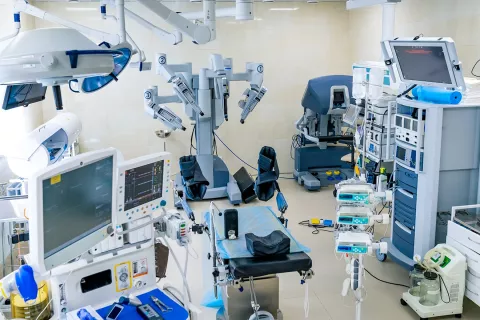
With the implementation of the European Union (EU) Medical Device Regulation (MDR) 2017/745, one of the areas that caught the most attention was the new Post-Market Surveillance (PMS) system for devices. Establishing a PMS for a device has become a mandatory task for manufacturers. The objective behind this stringent requirement is to ensure device safety throughout the product’s lifecycle. Post-market Clinical Follow-up (PMCF) is part of the PMS and refers to the evaluation and collection of data for the devices placed in the market. The goal of the PMCF is to monitor the safety and performance of the device in a real-world setting. The PMCF can further identify potential risks that could not be determined during the pre-market clinical investigation.
One of the crucial tasks here is to draw up the documents associated with the PMCF. It mainly constitutes two (02) major documents – the PMCF Plan and the PMCF Evaluation Report. The PMCF plan outlines all the procedures and methods that need to be followed for collecting and evaluating clinical data. A typical PMCF plan includes the following:
- Manufacturer Information such as an address, other contact information, and European Authorised Representative (EAR), if applicable.
- Details of the device, such as product name, device description, intended purpose, and intended users.
- Activities related to the PMCF include information with respect to the different activities that will be carried out under the PMCF. Details of each general and specific procedure are to be mentioned, from the aim and the justification for choosing a particular procedure, to the known limitations of the activities. Further, the activity timeline must also be mentioned on a quarterly or at least a yearly basis.
- Reference to the technical documentation, where relevant sections from the Clinical Evaluation Report (CER) and risk management file are to be analyzed and followed up on, and where other updates are also mentioned. In case of no relevant information, the manufacturer is required to state so under the specific section.
- Evaluation of clinical data relating to equivalent or similar devices, where the manufacturer must incorporate information on the equivalent/similar devices, for which the clinical data will be further evaluated and presented in the PMCF report. A key aspect to note here is that the PMCF data intended to demonstrate ongoing safety and performance should be taken from the device under consideration. The chosen device must be consistent throughout the technical documentation process, and a clear reference to the relevant parts of the CER should be made for each device listed. Data obtained from an equivalent/similar device can also be used to update state-of-the-art document and/or identify and assess relevant safety and performance of the device.
- The document needs to incorporate materials in the aspect of reference guidelines such as any common specification, harmonized standards, or applicable guidance document.
- Estimated date of the PMCF evaluation report since the template of the plan may seem easy, but there are several hurdles that manufacturers encounter during and after the planning phase.
The following are the three (03) most-encountered challenges by manufacturers:
- Defining PMCF objectives: The objectives should be set in a way that is clear and achievable which can pose to be a very difficult task. At the same time, the objective should align with the device’s intended use, intended user, and risk profile. Manufacturers can leverage data sources such as patient registries, electronic health records, public health databases, and more to establish the objectives. It must be noted that it’s not a study on off-label uses.
- Selecting apt study designs and protocols: Choosing apt study designs and protocols can be challenging, given that a balance must be struck between scientific rigor and practical feasibility, taking into account factors such as study size, duration, and patient recruitment. Consulting Regulatory experts to identify and evaluate different study designs and protocols has proved to be advantageous.
- Unanticipated events: Even with the meticulous planning and execution of the PMCF study, some events, such as changes in clinical practice, the emergence of new adverse events, or any Regulatory changes, can occur, which could be different from the existing plan. Only one way to pass through such circumstances is to be prepared and always stay proactive in monitoring the safety and efficacy of the devices and up to date in the dynamic Regulatory environment.
The emphasis and importance of the PMS system cannot be denied or overlooked, and PMCF stands to be one of the crucial segments in ensuring the safety and efficacy of a device. Manufacturers must have a well-defined PMCF plan that outlines the procedures and methods for collecting and evaluating clinical data. Despite the challenges, staying up to date with the Regulatory requirements and investing in key resources can minimize risks and ensure that the device remains safe and effective throughout its lifecycle.
The right Regulatory partner can help you navigate through these complex procedures and ensure effortless PMCF planning and execution. If you are looking for a Regulatory partner to help you with the nitty-gritty of the PMS system, schedule a call with Freyr today!









